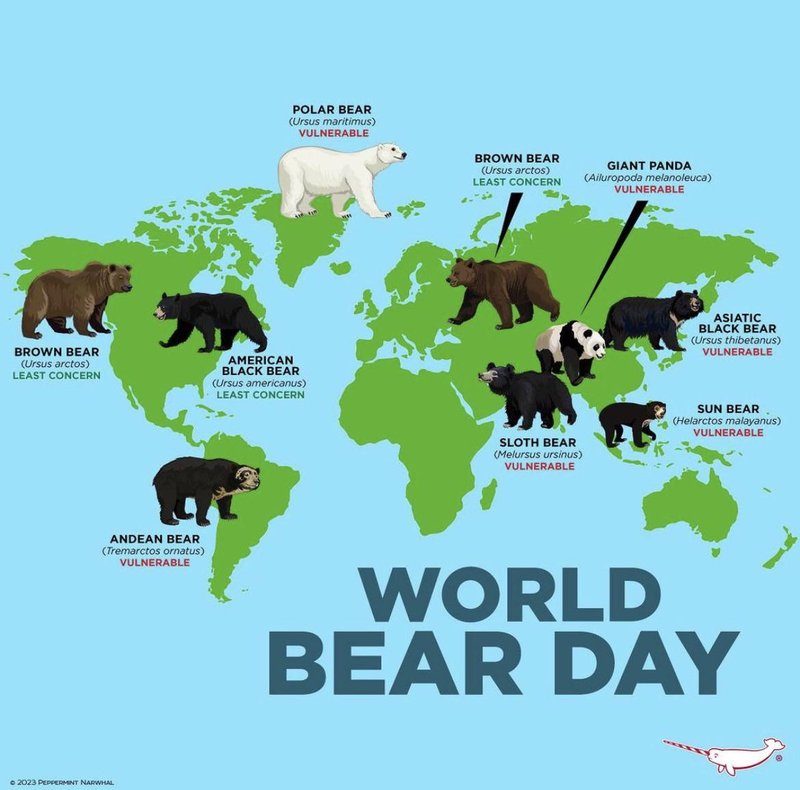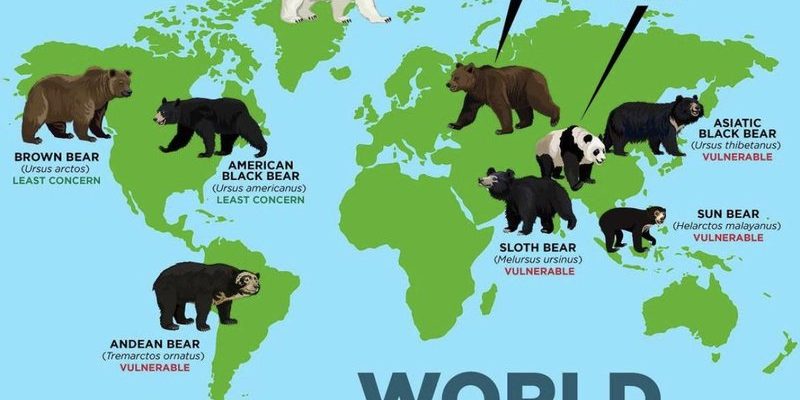
In this article, we’re going to peel back the layers and explore the habitat and distribution of black bears. From their cozy lairs in the woods to the challenges they face from urbanization, we’ll cover it all. So grab a cup of coffee, get comfy, and let’s dive into the world of black bears.
Understanding Black Bear Habitats
When we talk about black bear habitats, we’re essentially discussing where these fascinating creatures thrive. Black bears prefer areas rich in food and shelter. Think about it—would you want to live somewhere that doesn’t provide your basic needs? Exactly! That’s why they often settle in places with plenty of berries, nuts, and vegetation.
Black bears are naturally found in a range of ecosystems, including deciduous forests, coniferous forests, and even swamps. They need trees not just for food, but also for protection against predators and for building their dens. These locations offer everything they need to survive and raise their young.
Here’s where it gets interesting: unlike some animals who stick to one type of habitat, black bears are versatile. They can be found in mountainous regions, valleys, and even near human settlements, making their range quite impressive. This adaptability helps them roam widely in search of food, especially in spring and summer when they’re actively foraging.
Geographic Distribution of Black Bears
So, where exactly do black bears call home? Their geographic distribution stretches from coast to coast in North America. They can be found in the U.S., Canada, and parts of northern Mexico. The eastern United States is a major stronghold for black bears, with significant populations in states like Pennsylvania, North Carolina, and Tennessee.
Black bears also have a substantial presence in the Western U.S., especially in states like California, Montana, and Washington. This expansion of their territory reflects their ability to adapt to various environments and climates. You might even catch a glimpse of them in the rocky mountains or along coastal areas, where they find ample food sources like salmon during the spawning season.
Interestingly, there are even isolated populations of black bears in places like Florida and Yosemite National Park. These bears have adapted to their unique environments, showcasing the diverse ways they can thrive. In short, when it comes to black bear distribution, it’s safe to say they keep things interesting.
Types of Black Bear Habitats
Now that we know where black bears live, let’s take a closer look at the specific types of habitats they prefer. Each setting offers something unique for their survival:
- Forests: This is the most common habitat for black bears. They love the cover and food available in both coniferous and deciduous forests.
- Mountains: Black bears are great climbers and often inhabit mountainous areas where they can find berries and other food sources.
- Swamps and Marshes: These wetland areas are also home to black bears, providing a lush environment with plenty of vegetation and water.
- Near Human Settlements: Believe it or not, black bears have adapted to living close to humans, especially in areas where they can scavenge food easily.
Each type of habitat plays a crucial role in their lifestyle. For instance, forests provide dense cover for hiding and foraging, while mountainous terrains allow for greater mobility. Swamps offer a different kind of sanctuary, with plenty of water and food.
Food Sources for Black Bears
You might be curious about what exactly black bears eat in their various habitats. Well, their diet is pretty diverse! Black bears are omnivores, which means they enjoy a mix of plants and animals. They primarily consume:
- Berries: Blueberries, raspberries, and blackberries are sweet snacks for black bears. These fruits are abundant in summer and fall.
- Nuts: Acorns and hickory nuts are favorite treats, especially during autumn when they’re looking to stock up for winter.
- Insects: Yes, you heard that right! Bears munch on ants and bees during the warmer months.
- Vegetation: Grasses, roots, and even tree bark occasionally make it to their plates when nothing else is available.
The variety in their diet reflects their adaptability to different habitats. It’s fascinating how they can thrive on what’s available around them, almost like how we might whip up a meal from whatever leftovers we have in the fridge!
Impact of Urbanization on Black Bear Habitats
As cities expand, black bears are increasingly finding their habitats overlapping with human settlements. You might be wondering, “Is this a good thing or a bad thing?” Honestly, it’s a bit of both.
On one hand, black bears are becoming more skilled at navigating human environments. They learn to scavenge for food in backyards and dumpsters, making them somewhat of urban adventurers. On the other hand, this situation can lead to conflicts. When bears wander too close to humans, it can create dangerous encounters.
Urbanization has a significant impact on black bears by reducing their natural habitats. Forests are cleared for buildings and roads, making it difficult for bears to find food and shelter. This change can lead to a decrease in their population, which poses a concern for wildlife enthusiasts and conservationists.
Conservation Efforts for Black Bears
Given the challenges black bears face, it’s essential to highlight some conservation efforts aimed at protecting their habitats and populations. Many organizations are dedicated to preserving bear habitats and educating the public about coexisting with these majestic creatures.
Here are some of the key conservation strategies:
- Habitat Preservation: Protecting and restoring natural habitats is crucial. This includes reforesting areas and creating wildlife corridors to connect fragmented habitats.
- Community Education: Teaching people about bear behavior and ways to prevent conflicts can help reduce negative encounters between bears and humans.
- Research and Monitoring: Scientists keep track of bear populations and their health, which helps inform conservation strategies.
- Legislation: Policies aimed at protecting bears and their habitats help ensure these animals have a future in the wild.
By supporting these efforts, we can help ensure that black bears continue to thrive in their natural environments.
The Future of Black Bears
The future of black bears highly depends on how we manage their habitats and the challenges posed by urbanization. It’s up to all of us to contribute to conservation efforts. Whether you live in the mountains or the city, there are simple things you can do. You can secure your trash, avoid feeding bears, and support wildlife conservation organizations.
The truth is, black bears are remarkable creatures that play an essential role in our ecosystems. By understanding where they live and how we can coexist with them, we take a step toward a more harmonious relationship with wildlife.
In the end, black bears are not just animals roaming the woods; they are a vital part of North America’s natural heritage. So the next time you hear about black bears, remember the incredible habitats they occupy and the journey they undertake to survive in a rapidly changing world.

